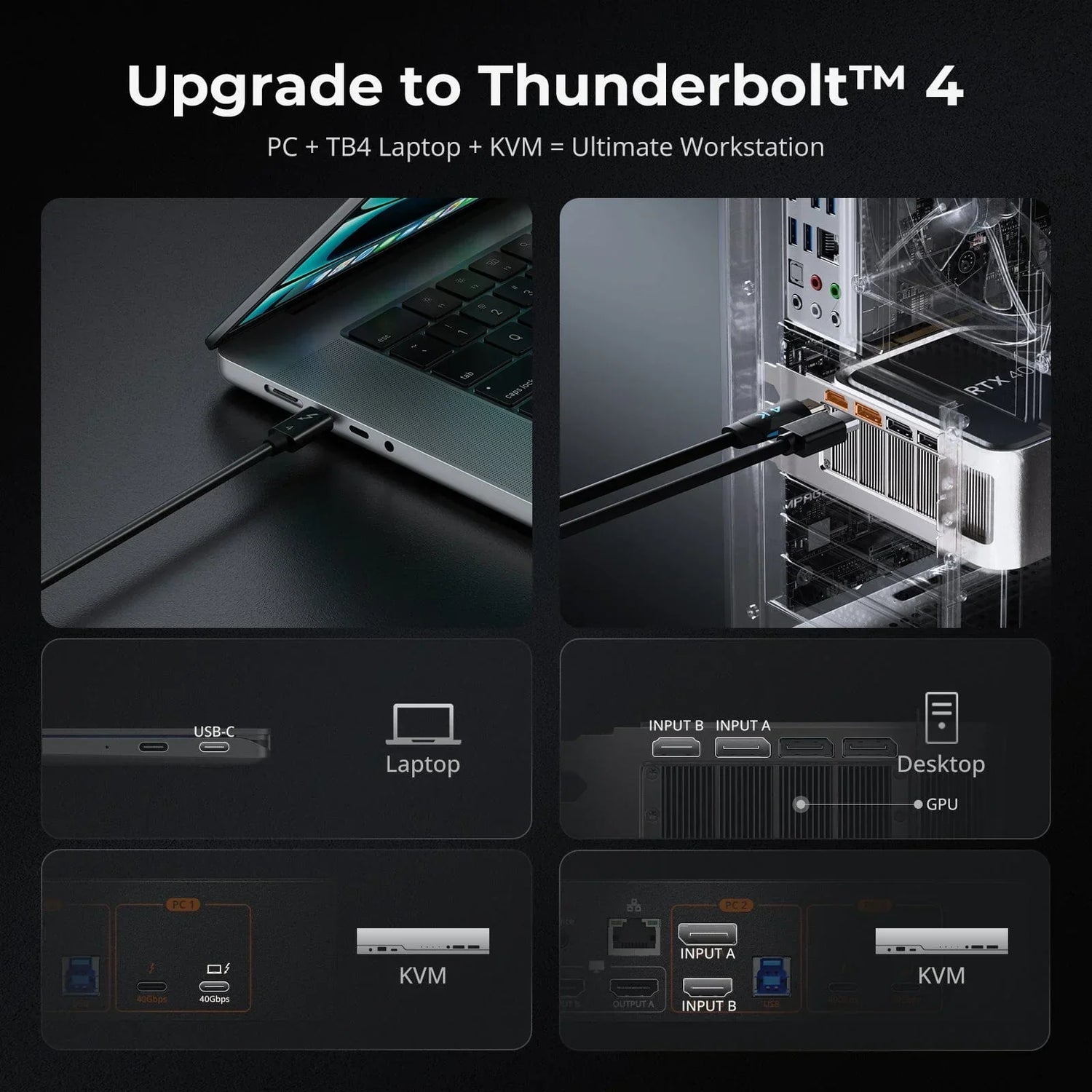KVM switches are hardware devices that allow you to control multiple computers using a single keyboard, monitor, and mouse (KVM). The first KVM switch was created as a tool for testing the quality of motherboards and production servers, supporting only video and keyboard input, as the mouse had not been invented at the time. As computer technology has continued to evolve, KVM switches have also developed, leading to the development of various types of KVM switches to meet the needs of different systems and applications. Here are four categories of KVM switches.
KVM Switch Types
From the perspective of computer access and control, KVM switches can be divided into two main types:
- Single-User KVM Switches: These are typically entry-level KVM switches suitable for small installations, such as SOHO or remote offices. They allow a single user to access the required number of computers from a single KVM switch. For example, the TESmart HKS0801A1U single-screen KVM switch allows one person to access up to 8 servers.
- Multi-User KVM Switches: Used in large installations and data centers where multiple users need to manage multiple computers or servers. The TESmart HKS1601A1U single-screen KVM switch is a good example, allowing multiple users to access up to 16 servers.
From the perspective of applications and technologies, KVM switches can be divided into the following two types:
- Analog KVM Switches: Analog KVM switches operate by direct cable connections from computers to the KVM switch to the console. Cables can be coaxial cables or Cat5 cables, depending on the switch.
- Digital KVM Switches: Also known as KVM over IP. These allow you to control your servers from anywhere with an IP connection. This can be within a corporate LAN or from anywhere around the world. Computers still need to be directly connected to the KVM switch, but users controlling the computers do not need a direct connection to the KVM switch.
These four main types of KVM switches also need to support various platforms and technologies. For instance, KVM switches need to support different keyboard and mouse interfaces such as PS/2, USB, Mac, and various video interfaces like VGA, DVI, ADC, HDMI, and DP ports. KVM switches also need to support different platforms such as Windows-based PCs/servers, Mac, Linux, and more. Computer Interface Modules (CIMs) are provided in various formats to support these different video and input interfaces.
It's clear to see that over the past thirty years, as applications and technologies have evolved, so have the requirements for KVM switches. Fortunately, KVM technology has evolved to a point where it offers an unrestricted combination of technologies breadth to meet the various technology needs in server rooms and data centers.
TESmart KVM Switch Recommendations
For Dual-display Device Scenarios: HKS0402A2U - Offers multiple switching methods, including front panel buttons, keyboard hotkeys, infrared remote control, and RS232. This means you can choose the most suitable way to switch computers for your workflow, improving efficiency. With its unique dual-display mode, you can switch between two monitors simultaneously and view from each computer separately. This provides greater flexibility for various work and application scenarios. It not only offers excellent performance and high-resolution support but also multiple switching methods and a wide range of application scenarios, making it an ideal choice for managing multiple computers. Whether you are a professional or a home user, this switch meets your needs, providing a smoother and more efficient working experience.
For Triple-display Device Scenarios: HKS0403A1U - Comes with a rich set of connectivity options, including 3 USB 3.0 ports (including 1 USB-C), LAN port (via RJ45 connection, up to 100 Mbps), integrated microphone, and left/right audio outputs. These features ensure you can easily connect various devices while maintaining network connectivity stability. Whether you are a professional user, a gaming enthusiast, or a mixed office user, you can benefit from its excellent performance and multifunctional features. This switch simplifies the management of multiple computers, providing you with a more efficient work and entertainment experience.




